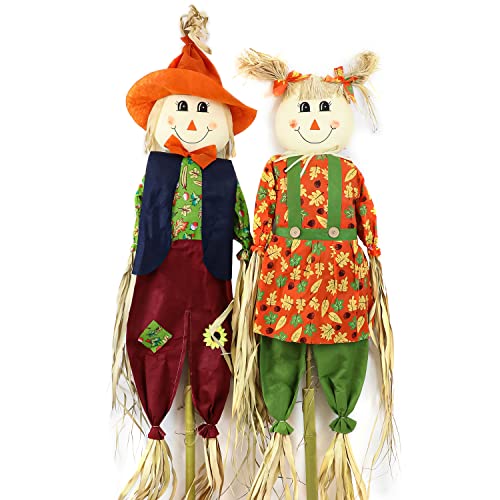Ancient Origins of Scarecrows
Scarecrows, although commonly associated with agriculture, have a history that dates back thousands of years. The earliest evidence of scarecrows can be traced back to ancient civilizations, including ancient Egypt and Greece. In these early times, farmers would use various methods to ward off birds and other pests from their crops.
One ancient Greek method involved the use of wooden statues, known as “scarekooks,” which were placed in fields to deter hungry birds. These statues were often carved to resemble humans or animals and were strategically positioned to create the illusion of a guard or a predator. This method was effective in scaring away birds and protecting the crops.
Ancient Egyptians also utilized scarecrow-like devices to protect their fields. These early scarecrows were made from reeds or sticks and were adorned with nets or feathers to mimic birds. The intention was to create a visual deterrent that would trick the birds into believing that an area was already occupied by their own kind.
Scarecrows in Medieval Europe
The use of scarecrows continued throughout the Middle Ages in Europe. During this time, scarecrows took on a more human-like appearance and were often constructed out of discarded clothing stuffed with straw or other materials. These scarecrows were often placed on poles or stakes in the fields to make them more visible to approaching birds.
In addition to their role in protecting crops, scarecrows also developed a symbolic significance during this period. They were seen as guardians of the land and were believed to possess magical abilities to repel evil spirits and protect against crop failure. As a result, many scarecrow festivals and rituals emerged during harvest seasons across Europe, celebrating the role of scarecrows in ensuring a successful harvest.
Scarecrows in Colonial America
The use of scarecrows made its way to colonial America with the arrival of European settlers. Scarecrows played a crucial role in the livelihood of early American farmers, as birds presented a significant threat to their crops. Farmers in the New World continued the tradition of creating scarecrows, often using clothing from their own closets or old sacks to dress them.
Scarecrows in colonial America also took on a more practical function beyond bird deterrents. They were often given the task of acting as living scarecrows, alerting farmers to the presence of various pests or intruders. Some farmers would even dress scarecrows in bells or other noisy objects to create sound-based deterrents.
Evolution of Scarecrow Technology
As agricultural practices advanced and technology improved, scarecrow designs evolved as well. By the 19th century, the traditional scarecrow made of straw and old clothing was still in use, but new materials and methods were introduced to enhance their effectiveness.
One notable development was the introduction of motion-activated scarecrows. These scarecrows were equipped with moving parts, such as flapping arms or rotating heads, to mimic the presence of a real person and startle birds more effectively. Other technological advancements included the use of reflective materials or noise-making devices to further deter birds.
In recent years, modern techniques such as the use of birds of prey decoys or bioacoustic systems have been adopted to control agricultural pests. These innovative methods aim to mimic natural predators or utilize sound-based deterrents to effectively protect crops without the need for physical scarecrows.
Scarecrows in Popular Culture
Beyond their agricultural significance, scarecrows also hold a place in popular culture. They are often depicted in literature, art, and movies, ranging from the iconic scarecrow in “The Wizard of Oz” to scarecrow characters in various children’s books.
Scarecrows are also a common feature in fall festivals and Halloween decorations, representing the changing seasons and the bountiful harvest. They have become symbols of autumn and the agricultural heritage of many cultures around the world.
The history of scarecrows is a testament to humanity’s ingenuity in finding ways to protect their crops and ensure food security. From humble beginnings in ancient civilizations to the technologically advanced scarecrow designs of today, scarecrows continue to play a vital role in agriculture and remain an enduring symbol of the harvest season.






